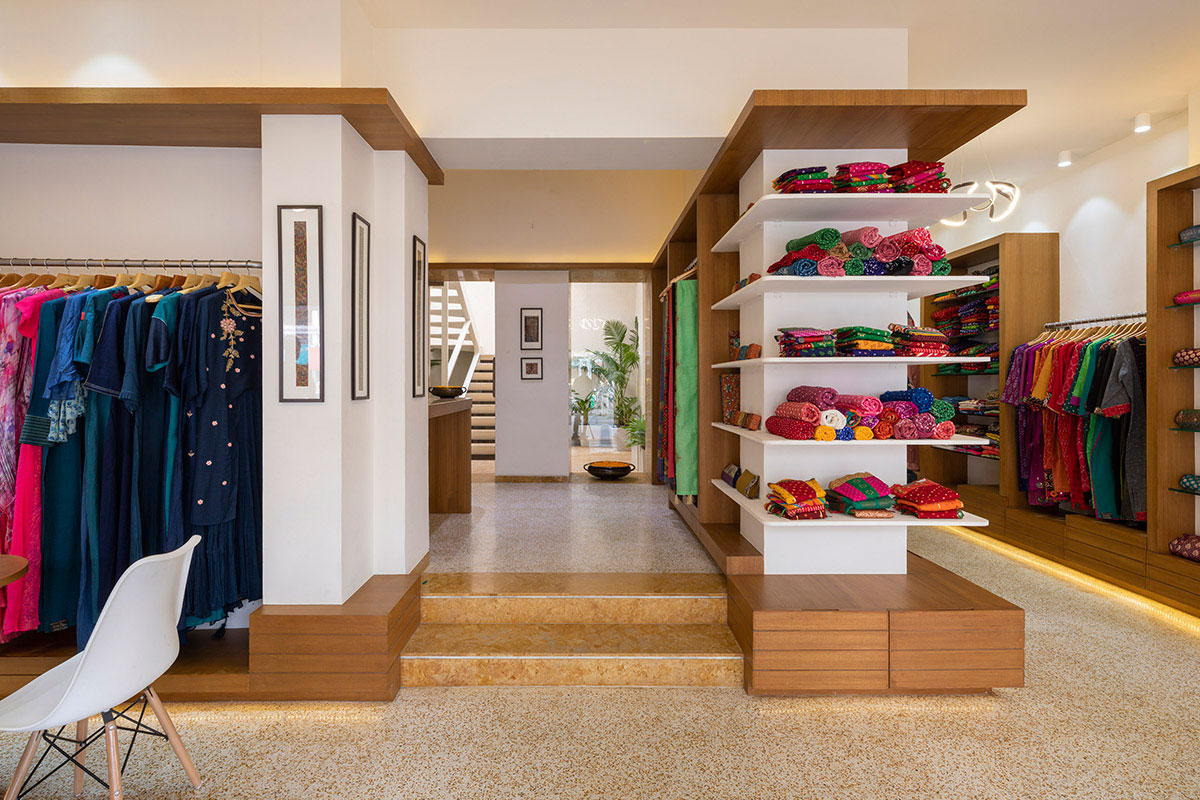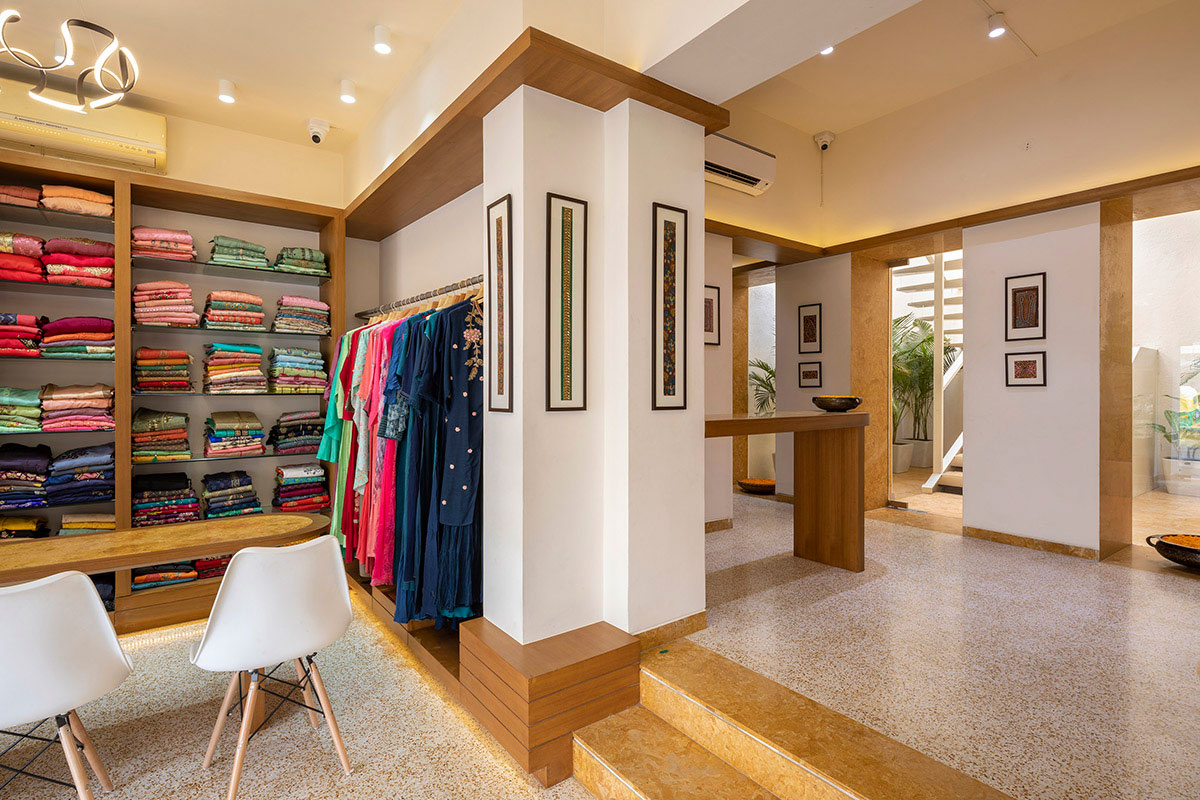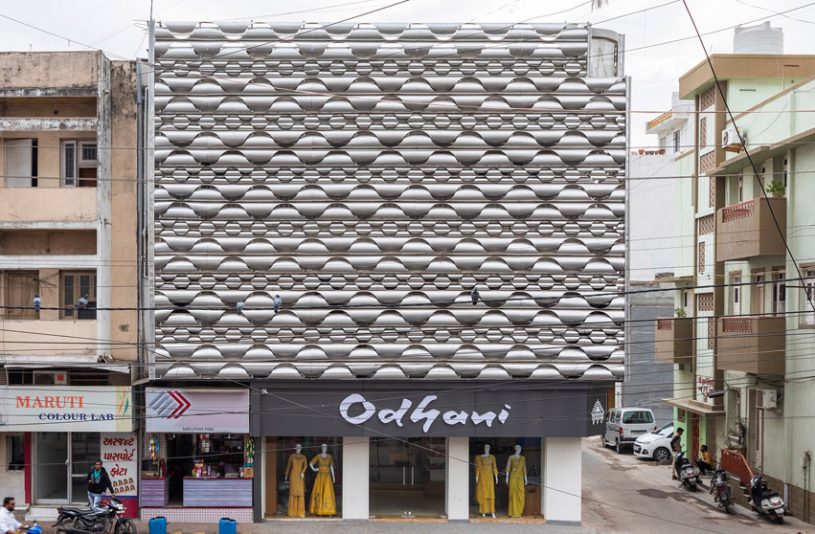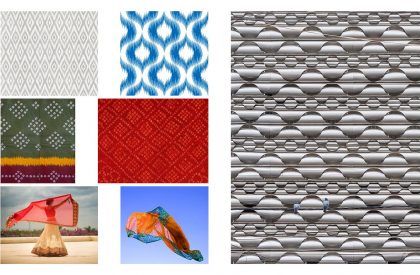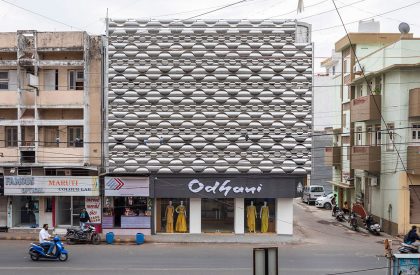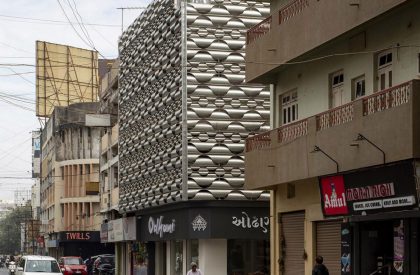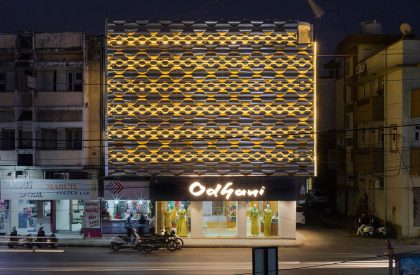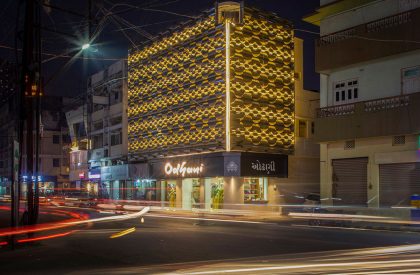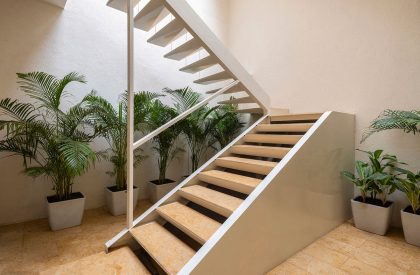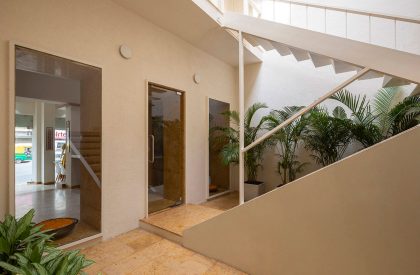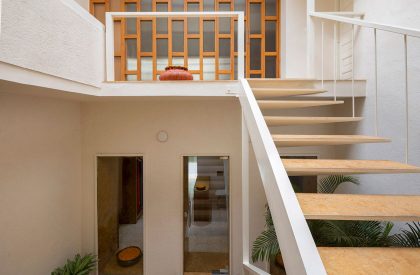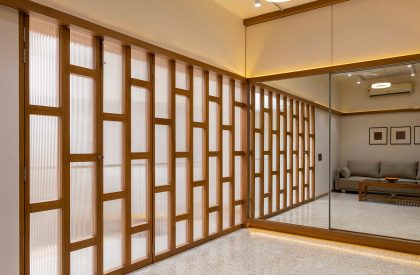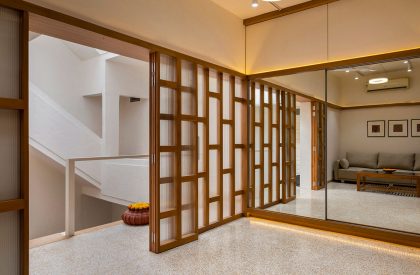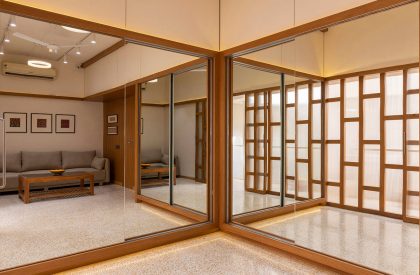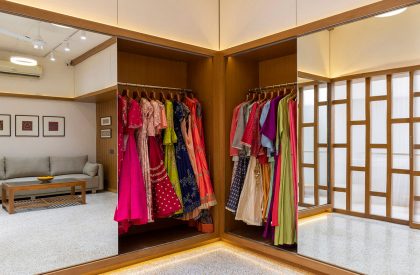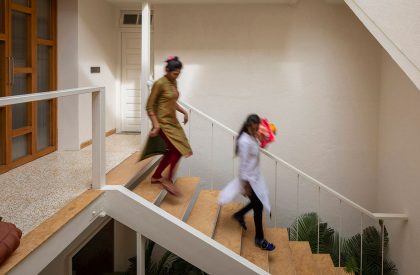Excerpt: Odhani is an example of commercial architecture designed by Playball studio in Rajkot, Gujarat. In terms of spatial planning, the Client’s major requirement was increase in qualitative display area, which was achieved by expanding the boutique to the all of ground floor and half of first floor. A new subtle and light weight staircase, to directly take the customers from the ground floor to the first floor studio, was added in the courtyard in place of the bulky old one.
Project Description
[Text as submitted by architect] In early 2019, playball studio was approached by a known clothing designer to revamp her existing boutique ‘Odhani’ (which is the gujarati word for a usually loose piece of flowing fabric that women wear over their traditional Indian outfits) in the city of Rajkot, India. The existing boutique was being operated out of the ground floor of a property that was constructed before nearly 50 years by the Client’s father as the residence for their extended family. This property is situated in one of the most important commercial areas of the city of Rajkot. It is a west facing corner property with a simple plan configuration where all usable spaces dot the corner edge while the opposite corner hosts an open to sky courtyard which connects the floors with a staircase that runs along its edges. The Client’s family moved out of this property before a decade and apart from the boutique occupying a part of ground floor and the tailors occupying a part of the first floor, the rest of the areas were not being used for any function.
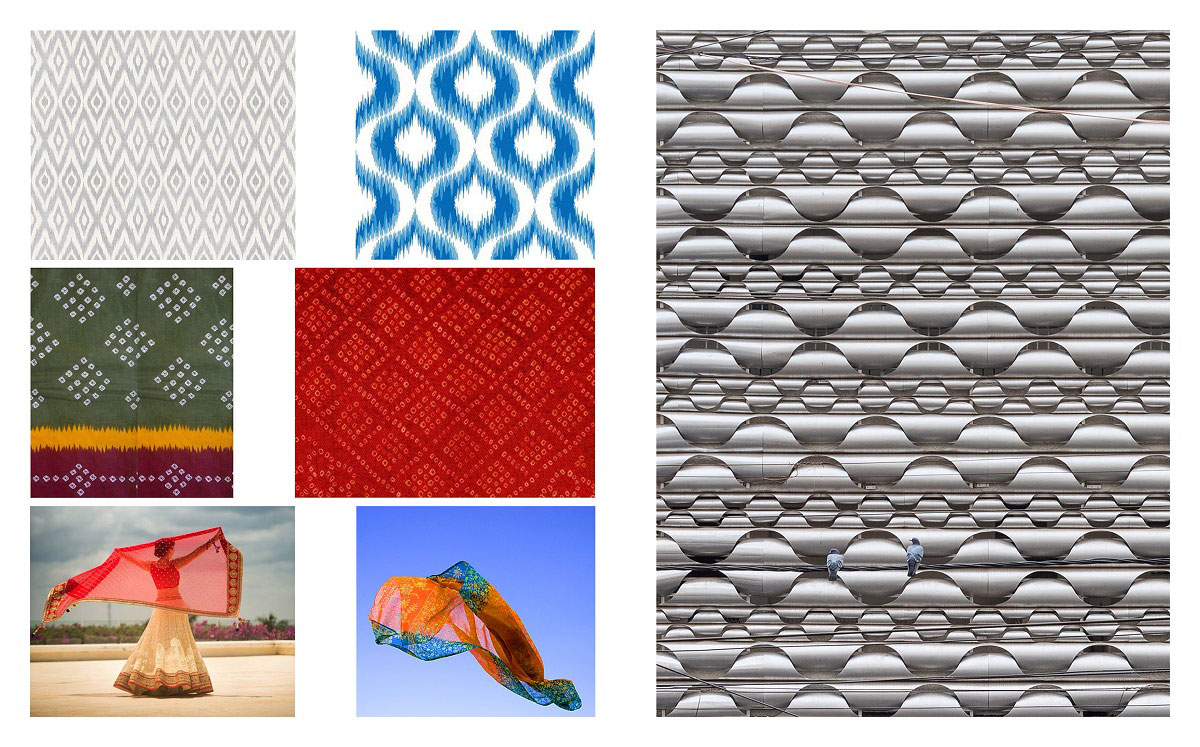
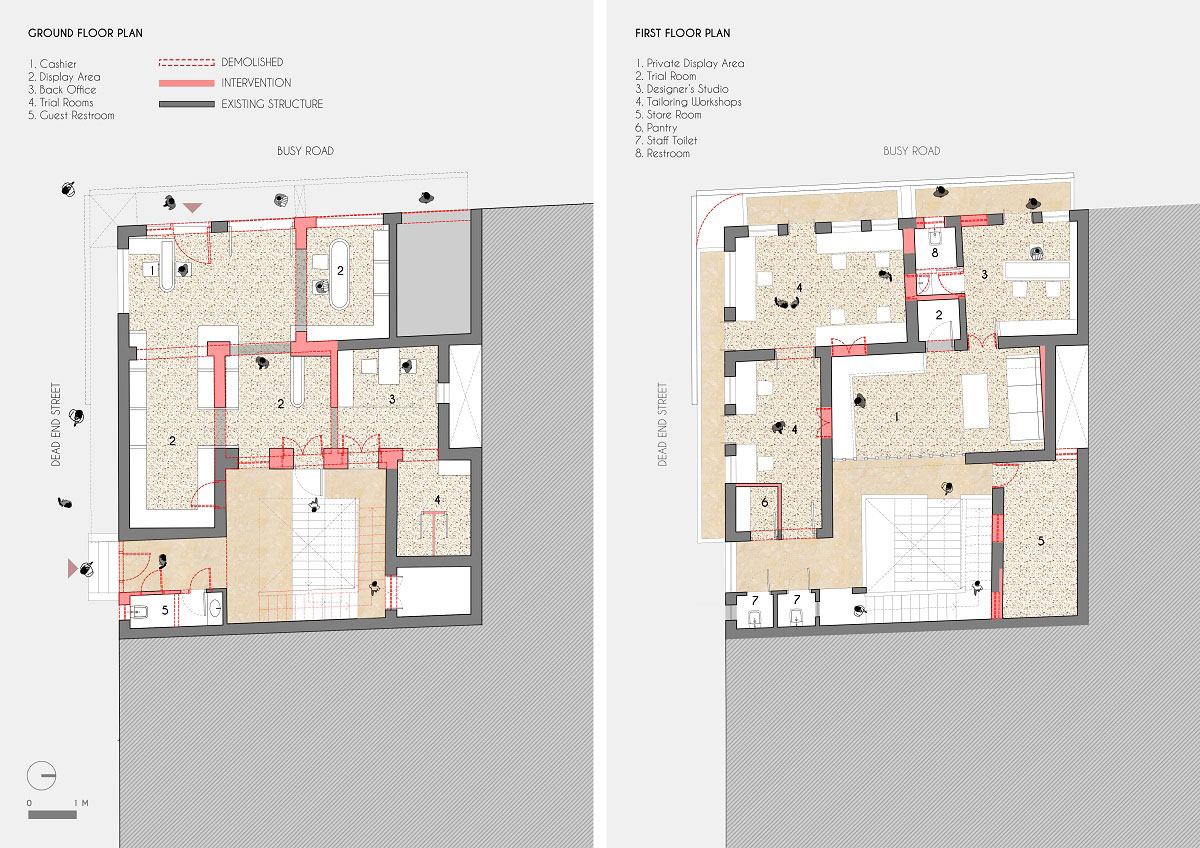
The studio did a thorough study of the Client’s boutique and found that she was designing clothing items which were an ideal mix where rich traditional Indian craft and techniques were overlapped with contemporary trends and style. This observation along with the element of nostalgia, which was also noted while studying the overall residential property, led to the formation of material palette paying tribute to the 70’s and 80’s when the original structure was actually built. Forms, shapes, textures, colours, etc. from this palette were then assembled in a silent manner to ensure that the Client’s designs get highlighted and not the re-designed space. Materials like locally sourced stone and handmade terrazzo tiles were used to accentuate the overall design sensibility of respecting local material and craft.
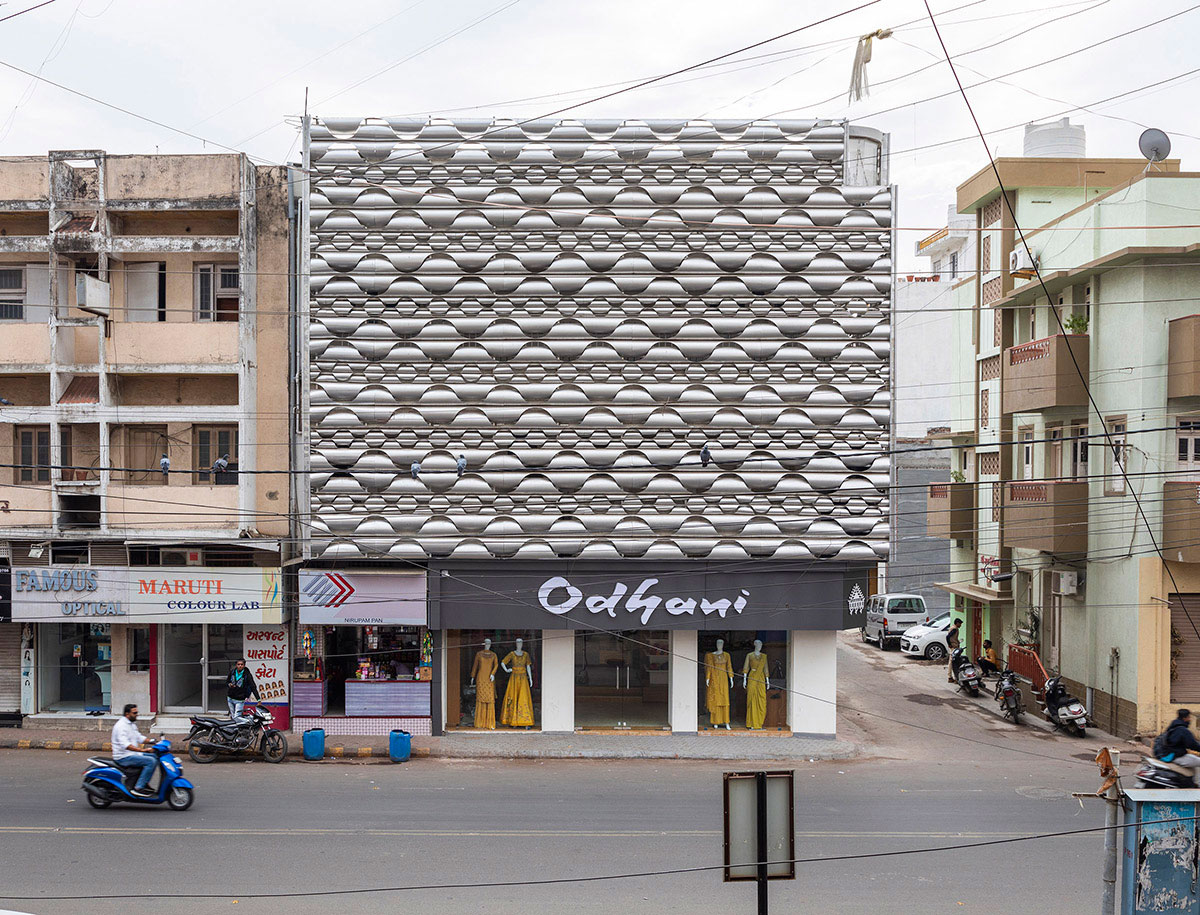
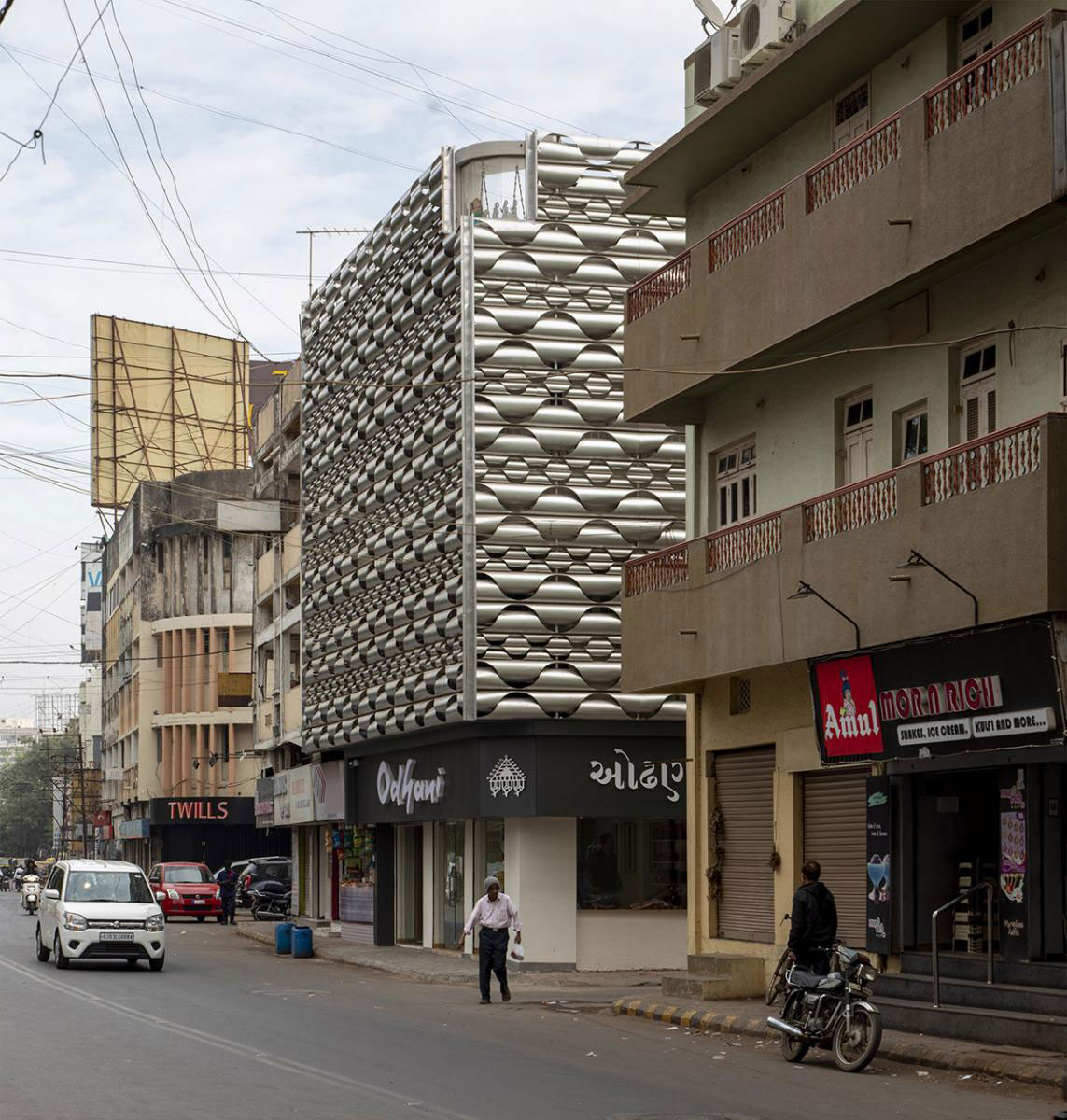
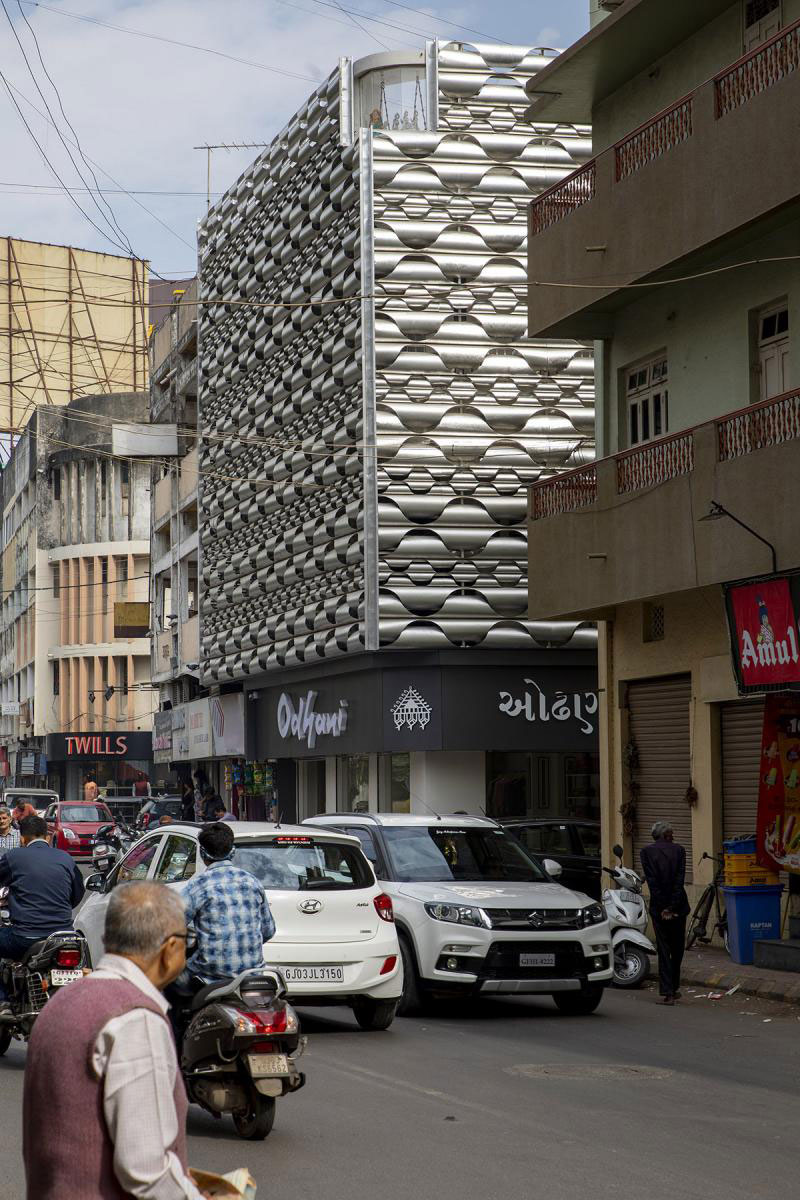
In terms of spatial planning, the Client’s major requirement was increase in qualitative display area, which was achieved by expanding the boutique to the all of ground floor and half of first floor. A new subtle and light weight staircase, to directly take the customers from the ground floor to the first floor studio, was added in the courtyard in place of the bulky old one. A detailed study was carried out of the built environment on the entire stretch of the busy road and it was observed that it comprised of an unpleasant over dose of proportions, forms, fake materials, colours, advertisement boards, etc. This led to a straightforward decision of making use of the complete façade area as a single canvas with repeated variations of a single module as simplicity was bound to stand out in this complex context.
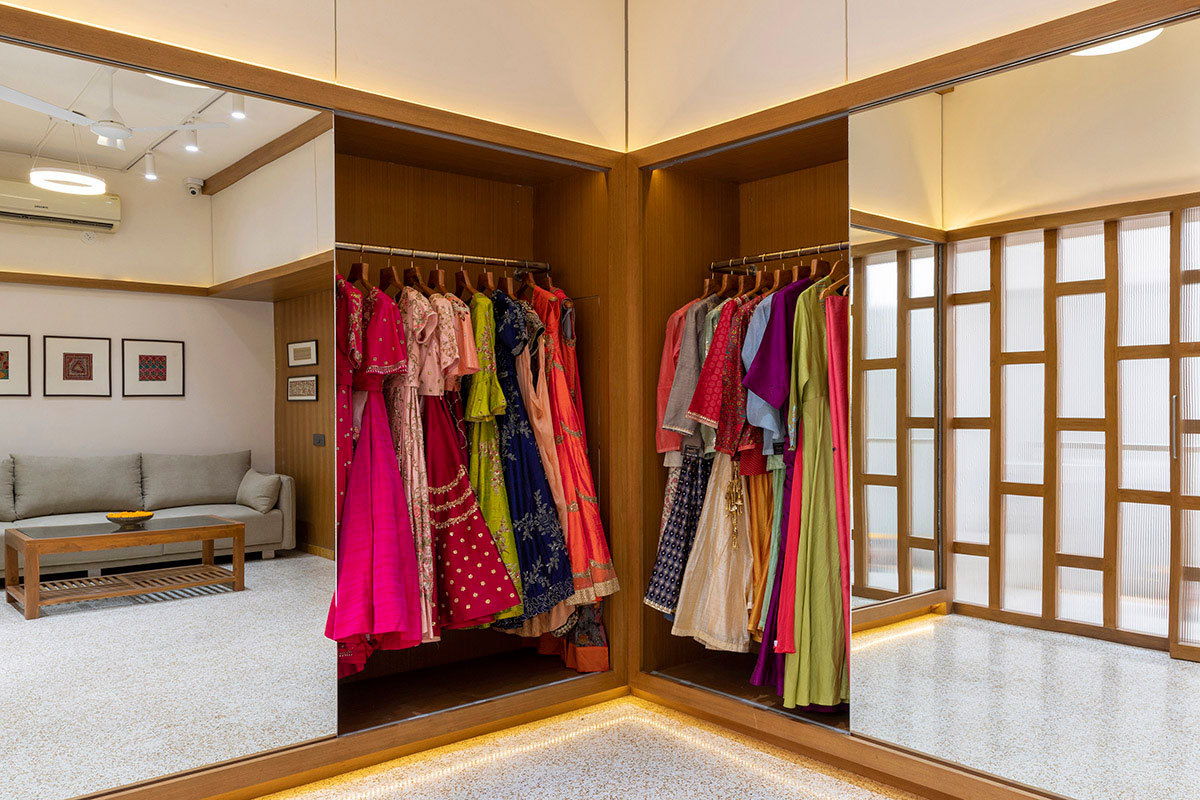
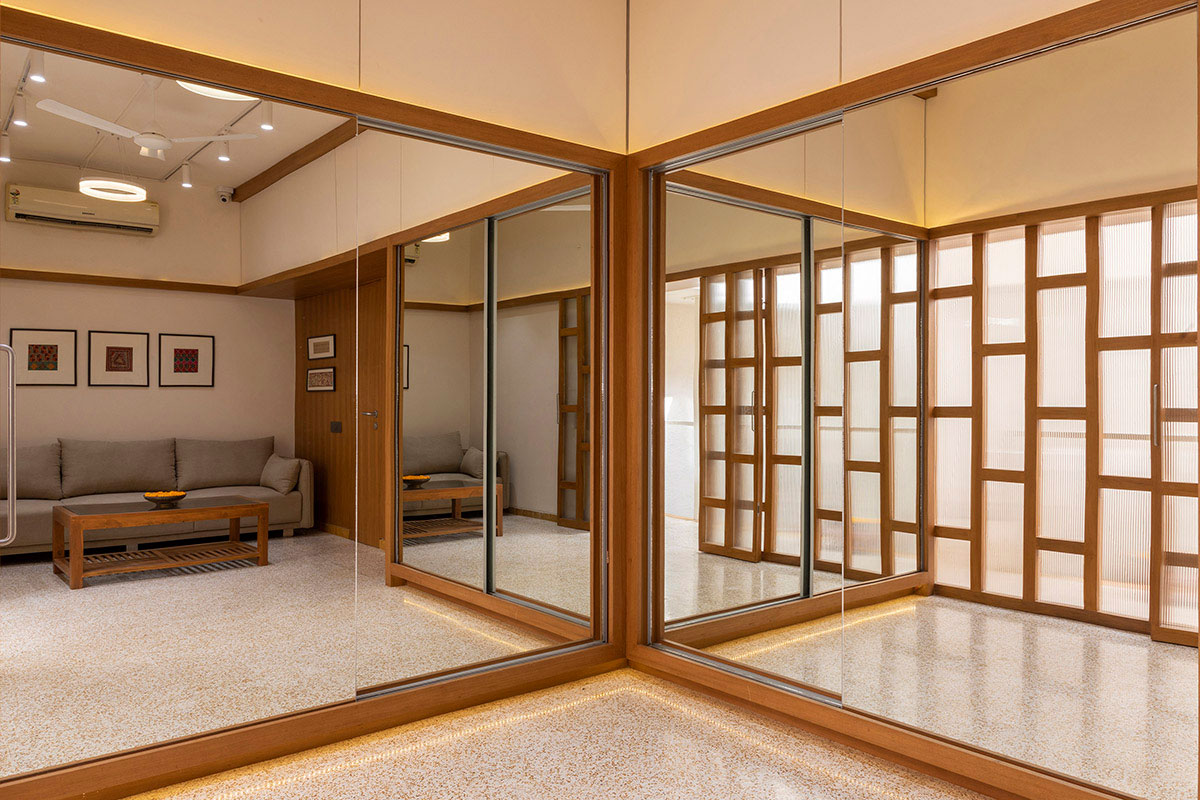
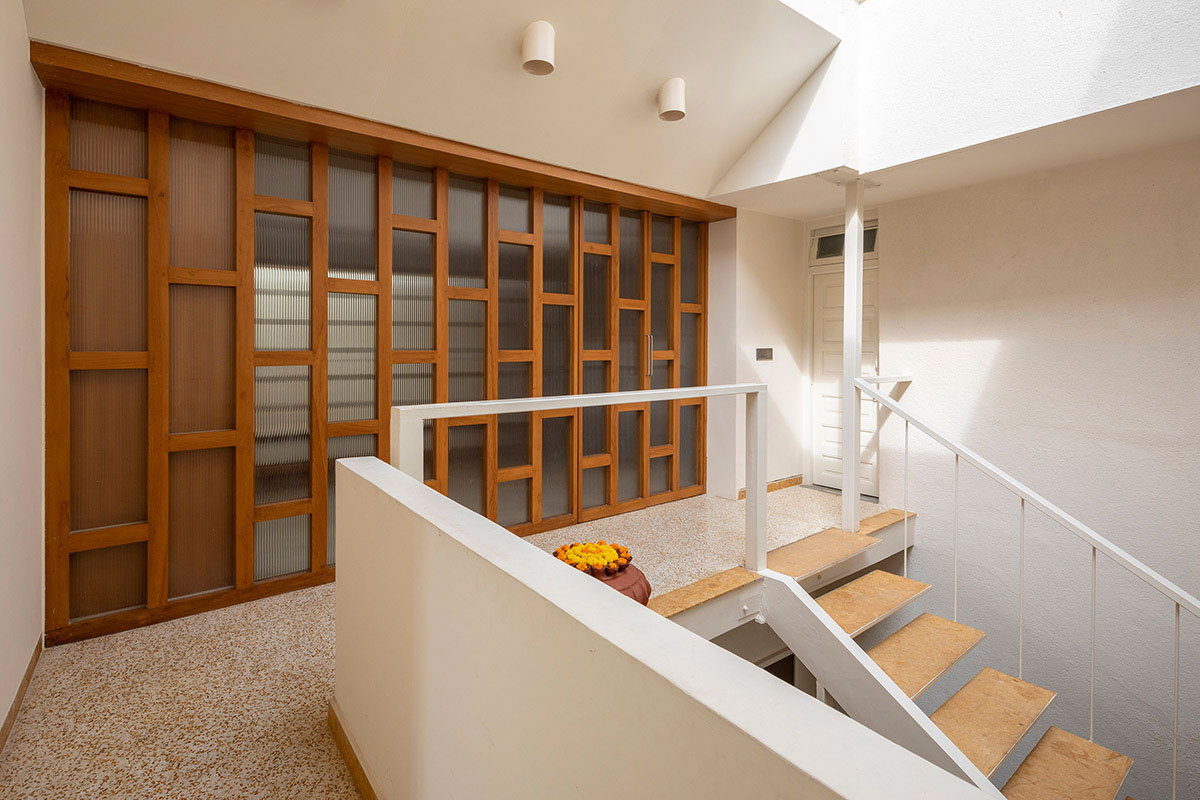
But the Architect found inspiration in the Client’s work. A lot of inferences were derived on the lines of geometry, repetition, tessellation, etc. from the patterns that were found in the traditional Indian clothing styles. These observations were overlapped with the conceptual from a free flowing ‘Odhani’. This resulted in a lot of patterns and forms, out of which a free flowing wave-like pattern was finalized. The parameters behind finalizing the said patterns rose from the preference of thin aluminum sheets as the primary material for the façade, as the major concern while designing the façade was that its overall load had to be as minimum as possible on the old load bearing structure.
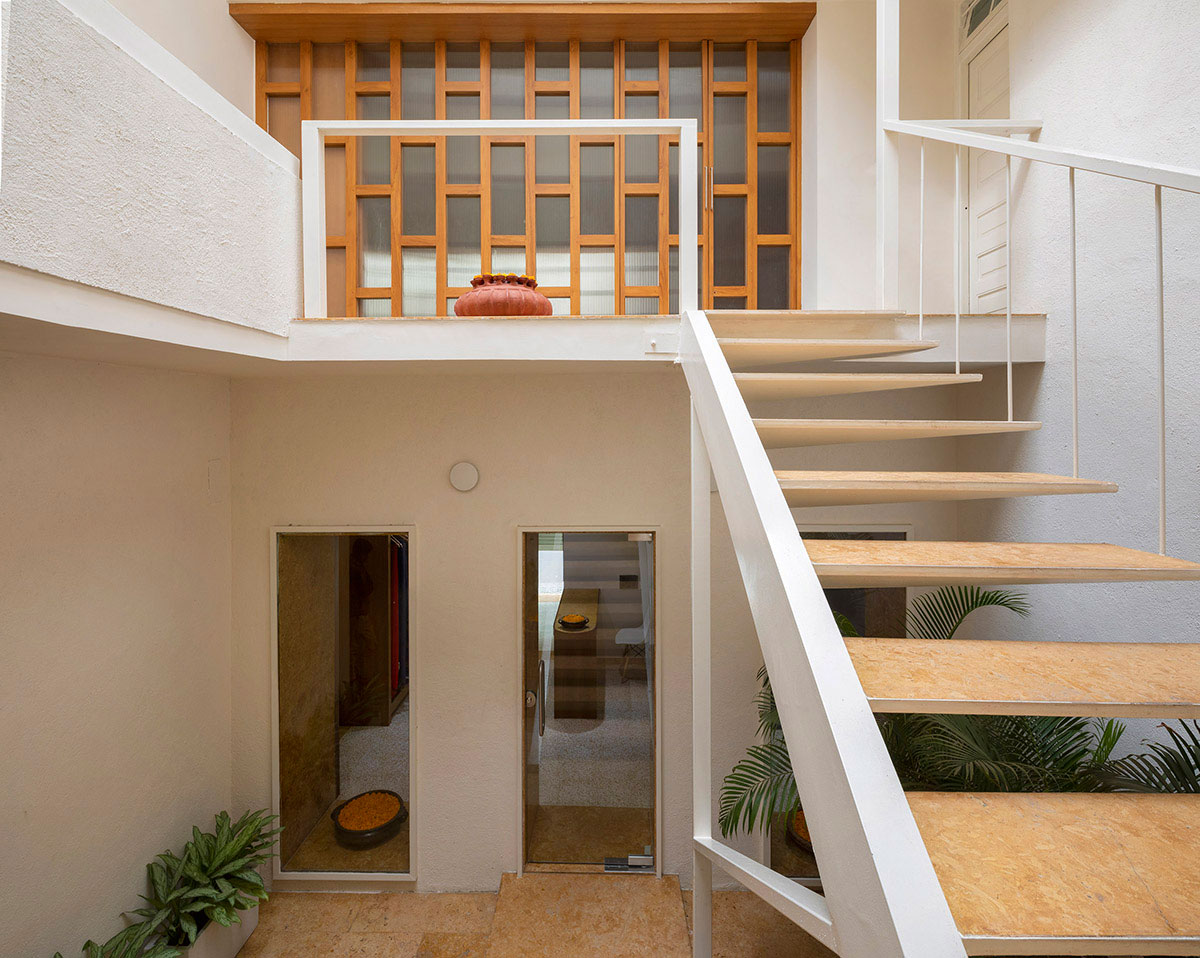
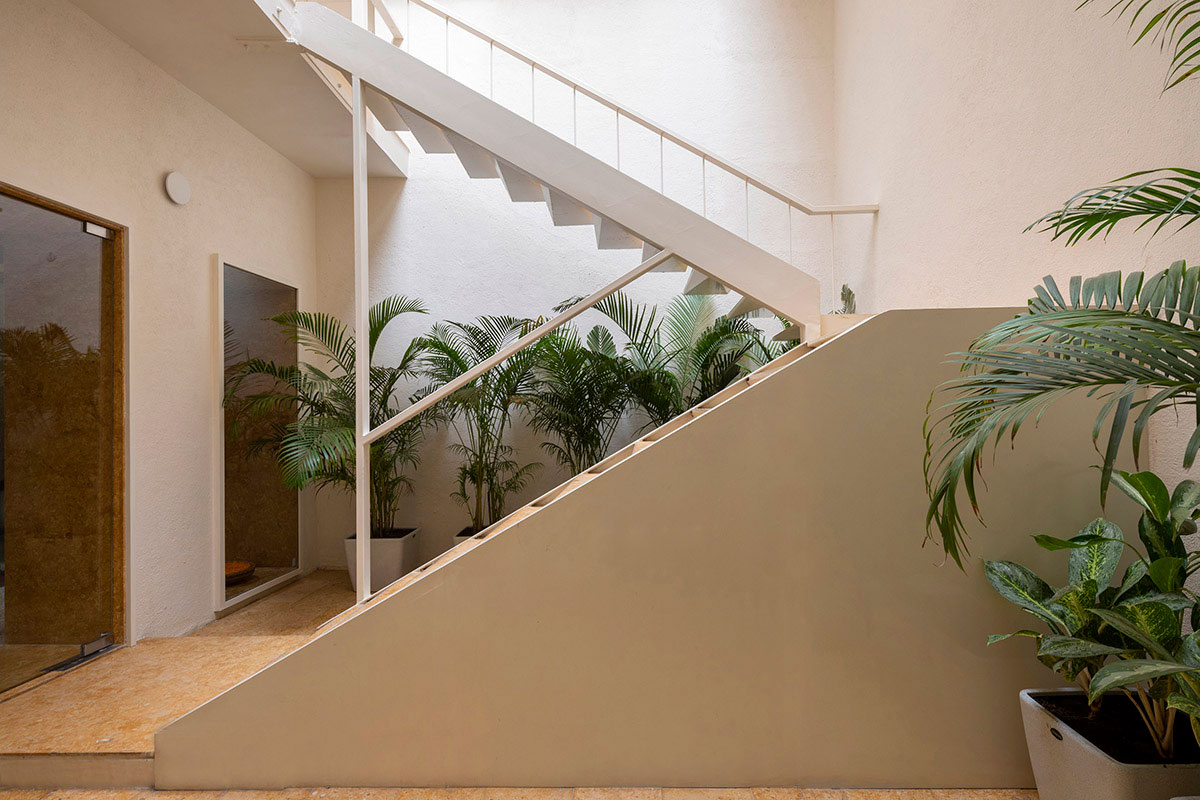
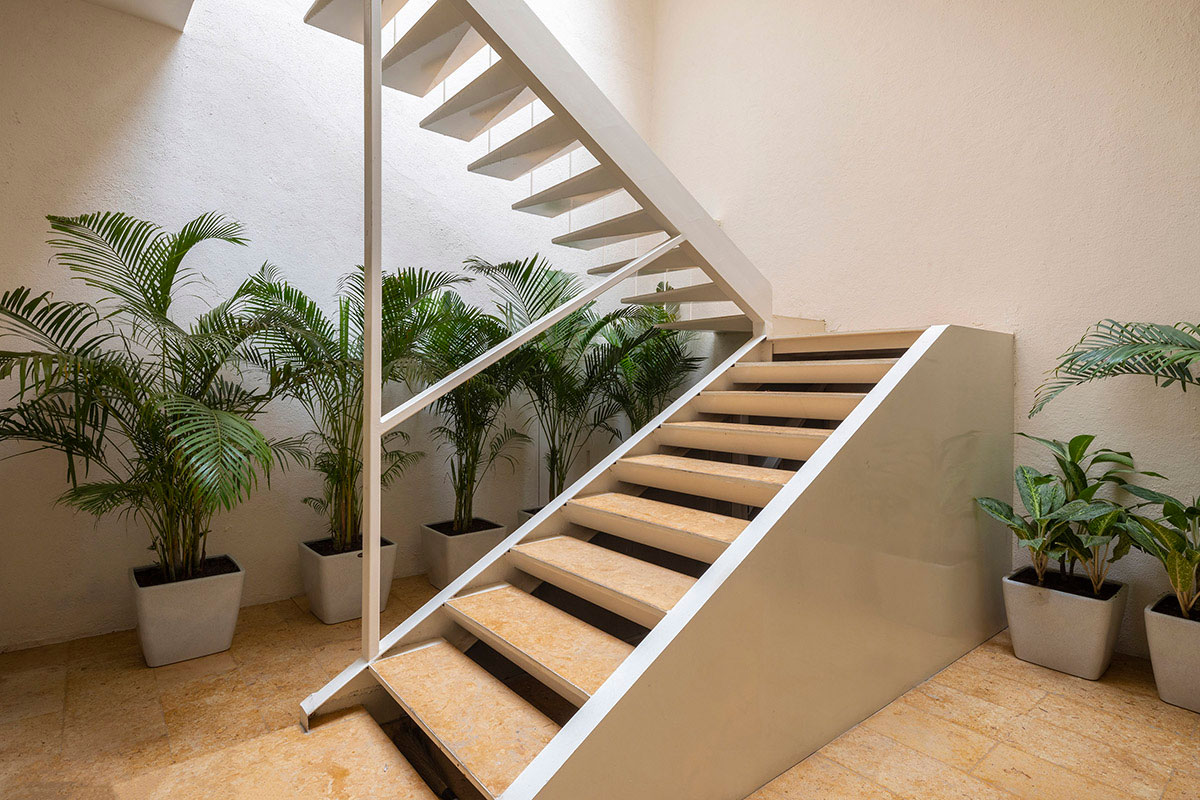
The finalized pattern was cut from standard size aluminum sheets in a manner which ensured that there was zero wastage of material. The shapes were then turned by hand into a semicircular section. These sections were then screwed one by one on the lightweight aluminum hollow sections which hold the façade to the existing structure. The form of each individual module made sure that sufficient light and wind were still able to trickle through the gaps in-between every modules. It was a conscious decision to not apply any sort of finish on the aluminum modules as the façade needed to be robust and the silver matt finish of the aluminum sheets was left in its raw form.
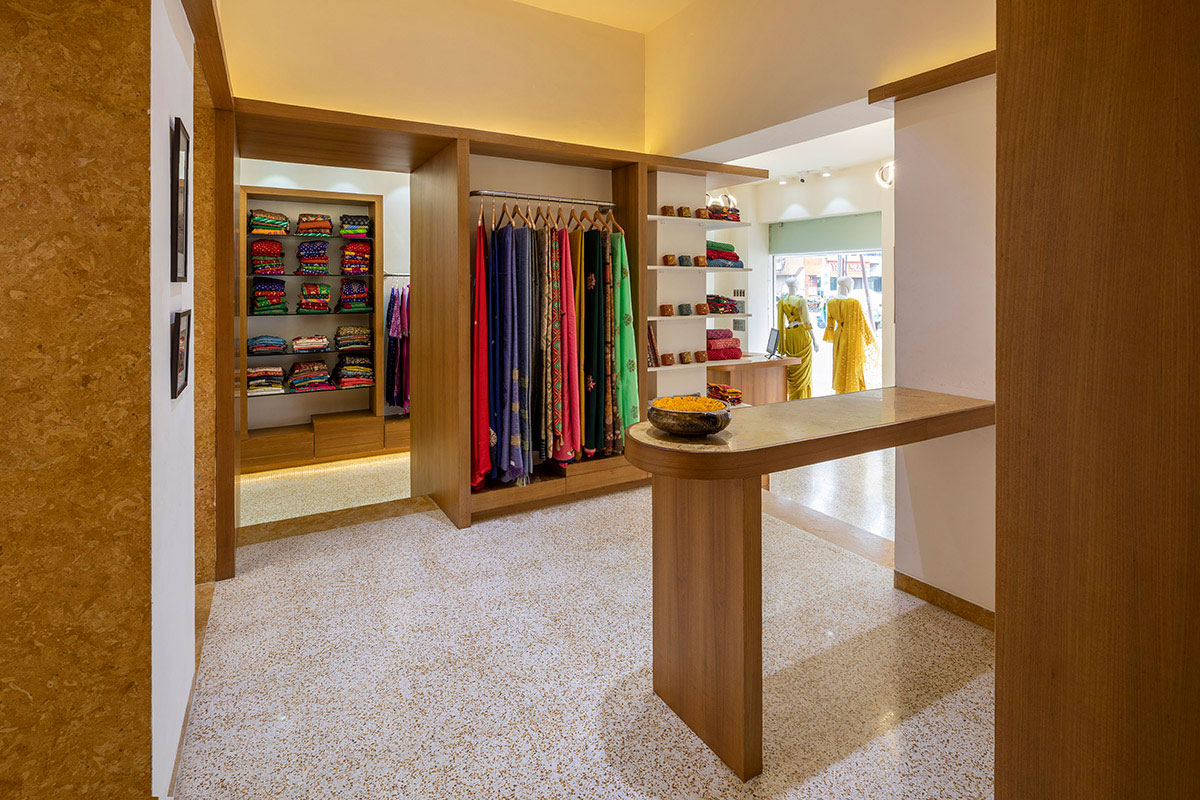
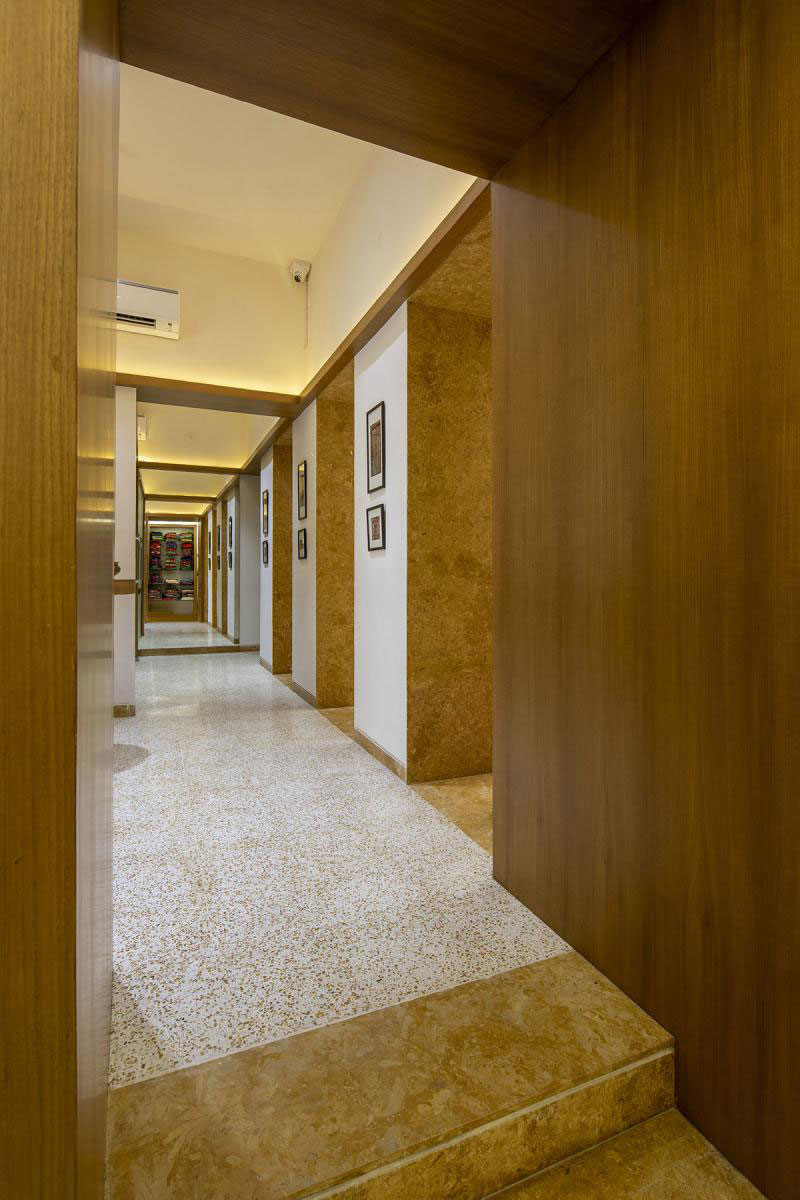

In the evenings, the artificial lights from the inner side of the façade give it a completely different look as it highlights the gaps in-between the patterns. This dynamic change creates an interesting positive / negative shift in the perception of the façade from morning to night.
